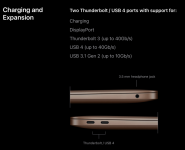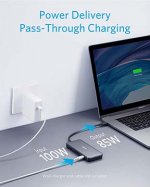TL;DR - Wattage ratings on power supplies don't matter as long as they are larger than the demand from the load. Voltages from those power supplies are critical and must meet the expectation of the load or the load can burn out.
--Tutorial begins, read if you want to know the "why" of those sentences--
A note to electrical engineers and electricians of all sorts, I know this is kind of primitive and ignores lots of other factors from inductance, reactance, etc, plus it assumes direct current, but hey, it's a primer!
Let's talk about electricity with an analogy to water. Voltage is roughly the equivalent of water pressure. Basically, how hard are the electrons/molecules of water pushing into the system at any time. Imagine a tank of water ten feet above ground. The water is pushing down from that tank through the pipes to provide pressure on the ground. Raise the tank to 20 feet and the pressure is doubled (roughly). Keep the tank at 10 feet but double the size of the tank and the pressure remains the same, but capacity increases. In a water system the water pressure is related to the height of the tank or power of the pumping station, and as long as it stays in an acceptable range, the size of the tank or size of the pumps pushing the water don't matter. Voltage is the amount of electron pressure in the system. Five volts is one pressure, 100 volts is 20 times that pressure, etc. The size of the generator making the voltage doesn't matter, as long as the voltage is steady. A bigger 5 volt supply is like our bigger tank at 10 feet. Same pressure, just more capacity at that pressure.
Amperage is the rough equivalent of water flow, i.e, how many of those electrons/molecules pass through the wire/pipe. So in the pipe at the bottom of our tank, the amount of water that can possibly pass through the pipe is measured by the size of the pipe. Amperage is also throttled by the size of the electronic path. Current flow creates heat in the circuit though which it flows. A heavy wire can handle more amps than a thin one, and a thin wire can handle more amps than a 5 nanometer wide trace on an electronic chip. Most electronics are protected by components that restrict the flow of current to keep it below what would damage the system, sometimes by sacrificing themselves. Think about a fuse or circuit breaker in your house. They are rated in amps and will fail/open if the amp flow exceeds the rating. A 15 amp circuit breaker will open at 15.1 amps current flow. Internal to the Mac are some components that will work to protect the rest of the components, burning out at some level of excess voltage. Unfortunately, they are not user-replaceable, but they do exist. They are designed to divert small variances in voltage to prevent them getting through to more delicate stuff, not to protect the whole system against major voltage differences.
Resistance is the pushback against the flow of electrons/molecules. It is rated in Ohms, named after a scientist long ago. In our water example, if you put a propeller in the pipe to drive a generator, the water will push against the blades of the propeller, but the propeller will resist the flow of that water. The more the generator drags on the propeller, the harder the propellor resists the flow. So the flow of electricity, in amps, is the measure of how many electrons can get through the wire and resisting load. The formula is amps = voltage/resistance. So, if you have a 5 volt source pushing electrons through a 10 ohm resistance, then 0.5 Amps of current will flow. The size of the 5 V supply doesn't matter, and even if the 5V supply COULD provide 100 amps, in that circuit only 0.5 amps will flow. The source just won't be very stressed at that power demand. Imagine a huge tank of water 10 feet off the ground, but only a 1 inch pipe attached. The flow of water is restricted by the pipe, not the size of the tank. How long the tank can provide that flow is related to the size of the tank, similar to how a bigger battery can last longer than a small one, at the same voltage and amperage flow.
Power is basically wattage. Watts are a product of the voltage and amperage, i.e., a watt is one volt of electricity causing 1 amp of current. In the previous example of 5 volts, 10 ohm, so 0.5 Amps, the power is that 0.5 Amp X 5 volts, or 2.5 Watts. Again, the ability of the supply to provide more is immaterial at this point. In the case of the 5V/100A supply, it COULD provide 500 W, but only 0.5 is being demanded, so it just idles along at that.
Power supplies are measured in max power possible at certain voltages being output. A 35W power supply is capable of providing the rated 35 W and keep the rated voltage steady. Demand more amps and the voltage has to drop, but if you don't demand the amps, the voltage regulator will adjust and keep the voltage steady. So, if you have a 5v/35W power supply, it will provide up to 35watts of power at 5 volts. That makes the maximum designed flow 7 amps. IF you now demand 8 amps, the voltage will have to sag because the 35 watts is fixed. So the power supply at 8 amps will only be able to make 4.375 volts. Sometimes the load can handle the drop, sometimes it can't. Some supplies will try to provide the 8 amps at 5 volts, but other components will have to handle the extra work and the unit will heat up. That's why power supplies under a heavy load get hot, the extra work being done to provide the current/voltage combination.
But now, if you only need 3 amps at that same 5 volts, what happens? Well, the voltage regulator will hold the voltage steady at 5 volts, the 3 amps will flow and the power supply will only be providing 15 Watts. it's no problem, nothing is going to go wrong, you just aren't driving the power supply to capacity. Much like if you open the tap on a faucet half way, the pressure is the same, (voltage) and the pipe size is the same (max current flow in amps) but the flow is reduced by the restriction of the faucet so the total amount of water you get is less. The tank and pipes don't care that the faucet is only using half of what they can provide. But if you try to suck out more water than the supply (height of the tank) or the pipe size can provide, the water pressure will drop. (What happens to the other 20 watts the supply can provide? They never existed. The demand from the power supply to the mains power will be reduced at the same time the current flow is reduced to 3 amps, so the extra watts never really get generated or used. They stay in the mains line for somebody else to use. Brownouts occur when EVERYBODY demands more current than the generator station can provide, so the voltage drops, causing the lights to dim, machines to run slower, etc. Eventually the generator gets overwhelmed and protection kicks in, shutting it down, leading to blackouts.)
But, and this is key, if the voltages provided are NOT correct, lots of bad things can happen. If a line expects 5 V and your supply provides 100 V, bad things happen. The resistance of the load stays the same, so 10 Ohms, but the voltage is now 10 volts, so a now 10 amps are flowing, and that extra current heats up the wires, components, etc, until they burn out. That was an extreme example, but if you connect a 12 supply to a 5 v line, bad things happen.
Now let's take your Mac and the two power supplies. Let's say the Mac is rated at 30W for demand. (The tech specs for an M1 MBA say that the power supply as provided is 30W, but doesn't say what the max demand the MBA makes. So, the best we can do is assume that the provided power supply, 30W, is at least sufficient for the MBA, if not larger than needed to allow the supply to run below max load.) The various voltages on the lines of the USBc interface socket are all mixed, so it's not simple to say "this many volts, that many amps make 30 Watts." But what you CAN say is that the power supply from Apple can provide UP TO 30 W total, if it is demanded and permitted by the load. More demand than 30W and the voltages will start to sag. Eventually the power supply will fail because more is demanded that it can supply. Ask for less than 30W total and the supply will provide the voltages needed and cruise along with the lower amperages flowing.
Now the Lenovo power supply, through the Anker hub, provides up to 65W of power. That is more than twice as much as the Mac may need at max demand. The fact that MORE power is available is immaterial, just as the fact that in our water example there is more water available in the tank than our half-open faucet will allow to pass. So the Mac now demands 30W in some full-load mode and the Lenovo supply provides it, no problem. It's loafing along, meeting the demand with ease.
In conclusion then, as long as the voltages on the various pins are ok, using an oversized power supply won't hurt your electronics.







